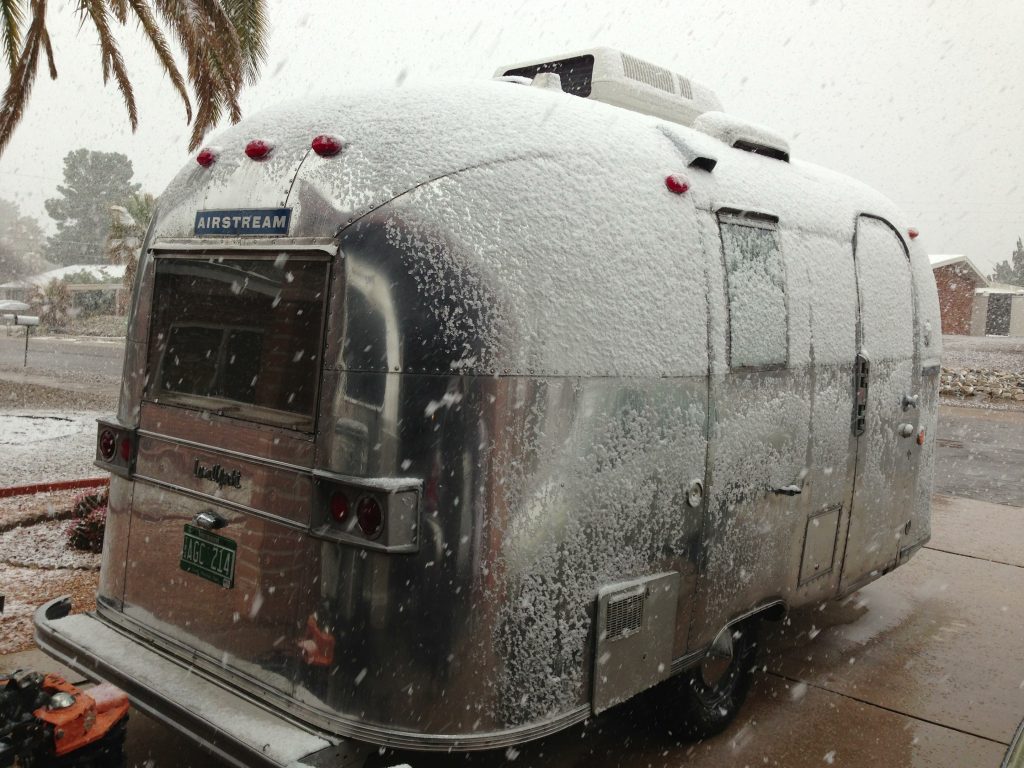I’d like to be able to say that once you get your new Airstream you don’t have to worry about anything going wrong with it for years, but that’s not the reality of RV ownership—no matter what brand you buy. Bouncing down the road inevitably takes a toll, specifically in the form of leaky plumbing fittings, loose screws, and broken rivets. The wise Airstreamer travels with a basic kit of tools to deal with those little on-the-road problems.
A perfect example came up a couple of weeks ago when we towed our 2020 Airstream Globetrotter 300 miles out to the quiet desert town of Borrego Springs, CA. After seven hours of driving all I wanted to do was go for a nice walk through the state park campground, but a mysterious puddle of water on the floor changed my priorities. I traced it back to the Airstream’s water pump, where a plastic screwed-on fitting was spitting water.
Tightening the fitting didn’t stop the leak, and it leaked badly even when the pump was off, so I had these options:
- Camp for 4 nights without water
- Hitch up and tow 60 miles to the nearest RV technician
- Fix it myself
Ten minutes later, the problem was solved, thanks to just one indispensable item: Teflon (plumber’s) tape. A few wraps of that stuff on the threads of the fitting and the leak was gone—and our camping trip was saved.
Tape is amazing stuff. There’s a tape for all kinds of problems, and it’s incredibly easy to use. Having a variety of specialized tapes has gotten me out of dozens of jams while traveling. Here are the six types of tape that I always have in my Airstream tool kit:
- Teflon
- masking
- double-stick molding
- electrical
- silicone
- butyl
Let’s go over all six types and see where they’re useful in an Airstream.
Teflon tape (AKA plumber’s tape)
As I mentioned, Teflon tape is great for sealing leaking threads on plumbing. If you get a type that is also rated for gas use, you can use it on propane “pipe thread” fittings too, but keep in mind that most of the propane fittings on an Airstream are flare or compression fittings that shouldn’t get tape. I use it routinely on all threaded water fittings, especially the drain plug for the water heater. This is the tape I use the most overall.
We include Teflon tape that is rated for gas and water in our Maintenance Essentials Kit, and our Propane Maintenance Kit, so if you have either of those, you’ve got a roll already.
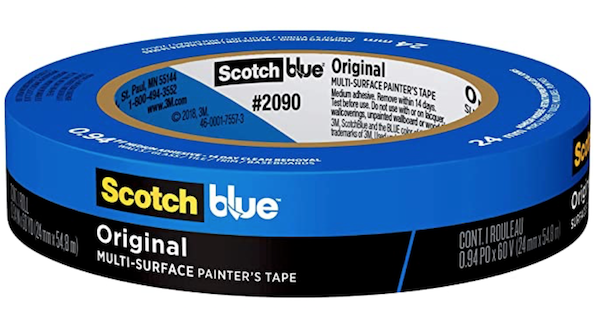 Masking tape
Masking tape
I don’t use masking tape a lot in the Airstream, but when I have to replace a pop rivet inside the Airstream, masking tape is ideal for protecting the surrounding metal surface. You can see an example in this short video. Sometimes the rivet tool “bounces” and can scratch the aluminum. A few layers of masking tape prevents that.
Double-stick molding tape
This stuff is surprisingly handy. The 3M “VHB” (Very High Bond) version is great for hanging pictures on smooth walls, and making other attachments where you don’t want to drill a hole. I’ve even used an automotive version of this to secure wires on the Airstream’s roof, and it held up through all kinds of weather and the relentless Arizona sun for years.
The best part of this tape is that it can be easily removed, even years later, without damage and without leaving a gluey residue.
Because this tape stretches rather than tearing, you’ll need some good heavy-duty scissors to cut it.
Electrical tape
If you get into little repairs of the Airstream’s 12 volt electrical wiring, you’ll want some electrical tape. But not everyone needs this. When I’m working on electrical stuff I tend to use splices and other (more permanent) connections so the electrical tape gets used very little. I think I’m still using up a roll that I bought in 2010.
 Silicone tape
Silicone tape
This is one that most people have never heard of, and I’ll admit that it’s only rarely needed in an Airstream. But when you need it, there’s nothing like it.
Silicone tape isn’t adhesive. It has the fascinating property that it sticks only to itself and only when you stretch it. This makes it perfect for wrapping around things to secure them like a custom-made rubber band. You just wrap it tight around the object you want to secure, and the silicone instantly fuses to itself. And it’s waterproof, which makes it a perfect (temporary) seal for leaking pipes.
Two months ago on a trip through New Mexico I noticed that two of the acorn nuts that secure a rockguard on the front of the Airstream had worked loose and fallen off. The rockguard was flapping in the breeze and threatening to come completely loose while towing. We pulled off the road but I didn’t have replacement acorn nuts available, and we were (of course) in the middle of nowhere. What to do?
Enter silicone tape. I wrapped the exposed threaded rods with a few layers of tightly-stretched silicone tape, essentially fashioning temporary acorn nuts made of silicone.This held long enough to get to Silver City and stop at the hardware store for new acorn nuts. (I also put blue Loc-Tite on the threads and bought two extra nuts for my tool kit, just in case.)
Like the double-stick tape above, you’ll need scissors to cut lengths of silicone tape. Cutting is also the only way it can be removed. Since it has no adhesive it always comes off perfectly cleanly.
Butyl tape
This stuff is the secret weapon of many an RV tech. It’s a putty that comes in a roll, so it can be stretched, trimmed, and formed into any shape you need. Use it to fill gaps around the underbelly (to restrict rodents from entering), plug holes, stop rainwater leaks at the windows, seal cracked glass, or use it as a replacement for glue.
It sticks to almost everything, stays gooey for a long time and makes a long-lasting seal against air and water. Think of it as a substitute for chewing gum.
Last week I found a new use for my roll of butyl tape. Two screws that hold an overhead cabinet hinge stripped out during a recent trip, and the cabinet door was hanging at an odd angle. The screw holes were so enlarged that I had to do the old matchstick trick to make the holes useable again. But the holes were in the upper part of the cabinet, facing down, so the matchsticks kept falling out.
Butyl tape was the perfect solution. I tore off a small piece and smeared the putty/tape around the matchsticks. This made them sticky enough to stay in place. After that, the fix was easy.
The one tape I don’t carry
Did you notice the tape I didn’t mention? Duct tape. Lots of people think duct tape is wonderful stuff, but I hate it. It leaves a gross sticky residue on things, it stretches when I don’t want it to, it’s not very strong, not waterproof, and not resistant to UV. If you carry the other tapes listed here, you won’t need duct tape.
And, if you have all six of these tapes and scissors in your Airstream tool kit, you will find there are a lot of repairs you can do even if you don’t think of yourself as being particularly handy. One of these tapes will probably save your camping trip someday, just like they did for us in the California desert.
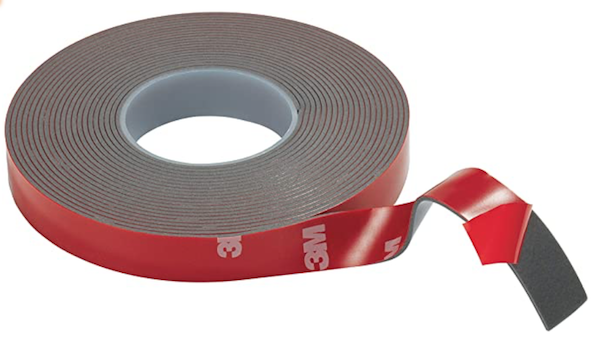
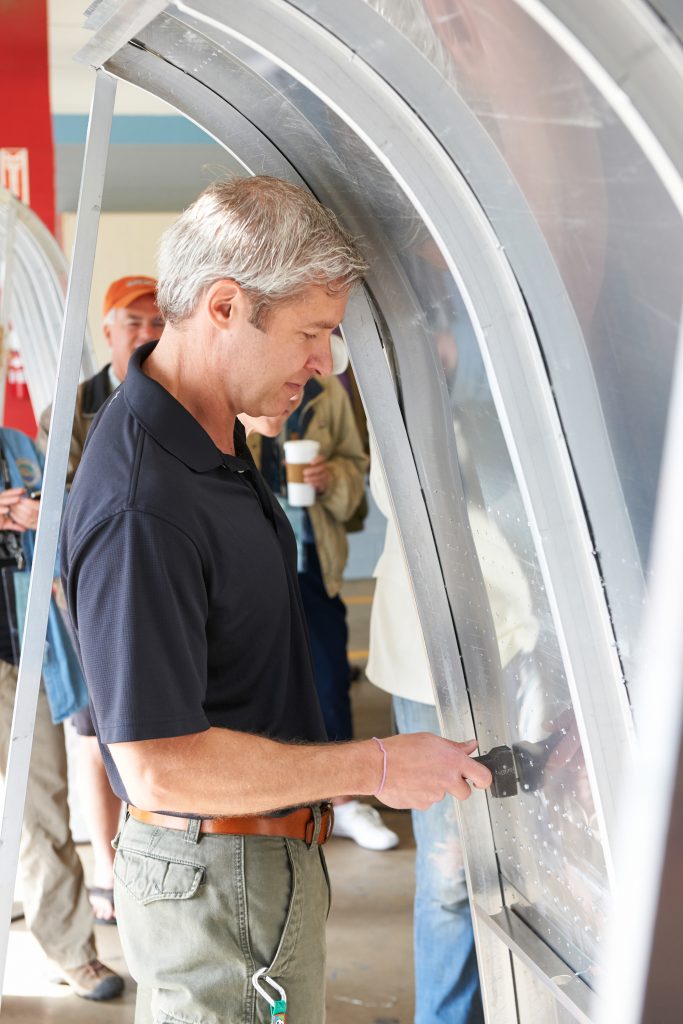
 The inside installer holds a shaped metal tool called a “bucking bar” that is pressed against the tail (or stem) of the rivet. The rivet gun very quickly hammers the rivet, pushing it inward and squashing the tail against the bucking bar, which causes the tail to get shorter and wider. This fills the hole and locks the two pieces of aluminum together very strongly.
The inside installer holds a shaped metal tool called a “bucking bar” that is pressed against the tail (or stem) of the rivet. The rivet gun very quickly hammers the rivet, pushing it inward and squashing the tail against the bucking bar, which causes the tail to get shorter and wider. This fills the hole and locks the two pieces of aluminum together very strongly.
 Airstream uses a variety of pop rivets, but most are aluminum and most have 1/8” diameter body or 3/16” diameter body. You can find the basic type in hardware stores. There are also specialty rivets with extra-wide heads, used for belly pan repairs. It’s a good idea to have a few of those in your tool kit too.
Airstream uses a variety of pop rivets, but most are aluminum and most have 1/8” diameter body or 3/16” diameter body. You can find the basic type in hardware stores. There are also specialty rivets with extra-wide heads, used for belly pan repairs. It’s a good idea to have a few of those in your tool kit too. 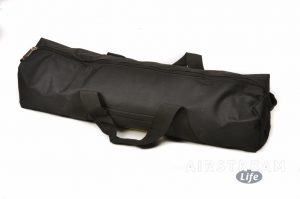


 A flat tire can do lot more damage to your trailer than you might think. It doesn’t just go flub-flub-flub as you come to a stop. Often you’ll have no idea that you’ve had a flat because it’s way back there on the trailer as it starts to shred. It rips up your Airstream, destroys the wheel, creates a hazard on the road, and it leaves you with a thousand dollars of damage that could’ve been prevented.
A flat tire can do lot more damage to your trailer than you might think. It doesn’t just go flub-flub-flub as you come to a stop. Often you’ll have no idea that you’ve had a flat because it’s way back there on the trailer as it starts to shred. It rips up your Airstream, destroys the wheel, creates a hazard on the road, and it leaves you with a thousand dollars of damage that could’ve been prevented. You can get drinking water hoses everywhere, and they’re usually pretty cheap—about $30. But the ones the RV industry pushes are really pretty bad. They kink, they have thin fittings that bend and leak after a year or so, and they fail regularly. Don’t even think of letting it freeze or get run over by a truck while it’s pressurized; the hose will burst. For these reasons, many people end up buying a new hose every year or so, which is not a good deal in the long run.
You can get drinking water hoses everywhere, and they’re usually pretty cheap—about $30. But the ones the RV industry pushes are really pretty bad. They kink, they have thin fittings that bend and leak after a year or so, and they fail regularly. Don’t even think of letting it freeze or get run over by a truck while it’s pressurized; the hose will burst. For these reasons, many people end up buying a new hose every year or so, which is not a good deal in the long run.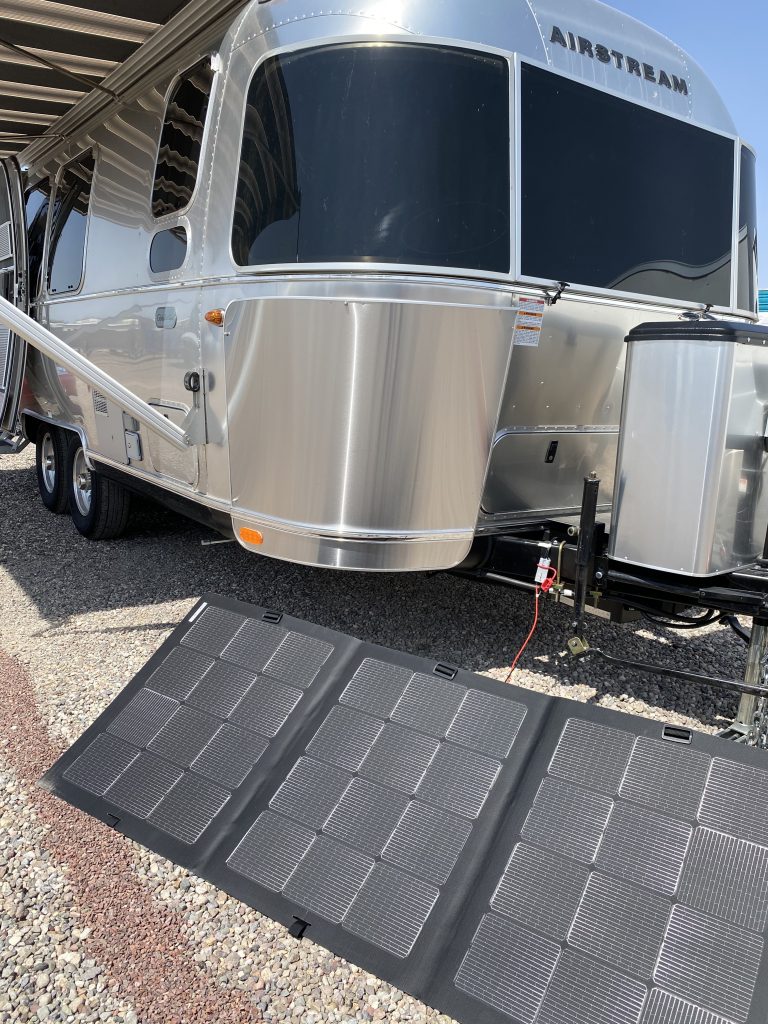
 In addition, our Portable Solar Kit uses a very high quality Merlin panel that has thousands of “interconnects” in each panel, many more than traditional panels. That means the panels are less affected by a bit of shading, say, from a leaf. The net result of this and the ability to move the panels to point at the sun means the 160-watt Portable Solar Kit can yield as much power as a significantly larger rooftop array.
In addition, our Portable Solar Kit uses a very high quality Merlin panel that has thousands of “interconnects” in each panel, many more than traditional panels. That means the panels are less affected by a bit of shading, say, from a leaf. The net result of this and the ability to move the panels to point at the sun means the 160-watt Portable Solar Kit can yield as much power as a significantly larger rooftop array.